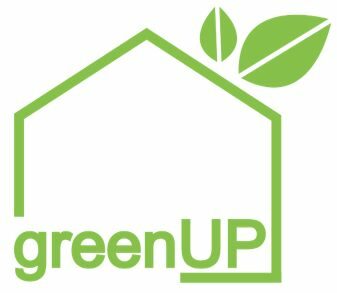In Europe, ten larger neighbourhoods and housing estates have been built using the PlusEnergy construction method so far. It is also possible to implement such energy concepts in multi-storey residential buildings and in existing neighbourhoods. Active Town House demonstrated in Frankfurt. In the two exhibitions with model houses in plus-energy construction in Cologne-Frechen and Wuppertal PlusEnergy houses are available from all well-known providers and can be visited. With the significant solar power surplus of the buildings and housing estates, decoupling from rising energy prices is possible and pedelecs, cargo bikes and electric vehicles can be operated in a permanently cost-effective and environmentally friendly manner.
One of the first plus-energy houses is the "Heliotrop" in Freiburg by Rolf Disch, which was occupied in 1994:
https://sdg21.eu/db/plusenergiehaus-heliotrop
Overview of PlusEnergy neighbourhoods and settlements
In the web database for sustainable settlements and neighbourhoods you will find a continuously updated list sorted by postcode with profiles, actors, addresses and photo galleries: www.plusenergie.siedlungen.eu
Blog on the topic of PlusEnergyHouse:
https://sdg21.eu/blog…plusenergiehaus-siedlung
The following is a list of realised PlusEnergy districts and settlements sorted by reference or planning year and size in descending order (last update: 10/2023):
PlusEnergyQuarters
According to the definition of the DGNB AG Urban Quarters, in contrast to a residential development, there is a significant proportion of >15% of the GFZ of commercial buildings within the new/construction area in an (urban) quarter. According to this definition, there are two realised PlusEnergy quarters so far.
- Model project Möckernkiez in Berlin (D): 385 UNITS. Occupancy: 2014/2015. Urban design: Baufrösche Kassel; architecture: 8 different offices including Rolf Disch and Baumschlager Eberle, Kaden Klingbeil, Sauerbruch Hutton. Internet: https://sdg21.eu/db/moeckernkiez-eg-berlin
- Plusenergiesiedlung Reininghaus South Graz (AT): 143 units with office and retail space. Occupancy: 2012. Architecture: Nussmüller Architekten ZT GmbH. Internet: www.aee-intec.at/...Id=141 resp. www.aee.at/...
- Plusenergiesiedlung Schlierberg in Freiburg (D): 59 units with office and retail space in the so-called "solar ship". Occupation: 2006. Architecture: Rolf Disch, Freiburg. Internet: https://sdg21.eu/db/solarsiedlung-am-schlierberg
Plusenergiesiedlungen
(sorted chronologically descending):
Realised
- Plusenergiesiedlung in Berlin-Weißensee Berlin-Adlershof (D): 128 flats. Communal rental flats. Topping-out ceremony: August 2016. Architecture: Deimel Oelschläger, Berlin. Internet: http://sdg21.eu/db/plusenergiehaeuser-in-berlin-adlershof
- Plusenergiesiedlung Ludmilla Residential Park Landshut
- Plusenergiesiedlung Bad Vilbel (D): 16 units. "KfW Efficiency House 55″ Completion: 2014. Architecture: Bien-Zenker AG.
- Dortmund has the "100 energy-plus houses" funding programme. In the "Phoenixsee" development area in particular, many PlusEnergy houses have been realised in individual buildings spread across the development area.
- Sunny Watt housing estate in Zurich (CH): Size: 19 units. Occupancy: 2010. Architecture: Beat Kämpfen, Zurich. Internet: www.kaempfen.com/projekte/587-wohnsiedlung-sunnywatt-2010
- Plusenergiesiedlung in Weiz (AT): Size: 22 units. Occupancy: 2006. Architecture: Kaltenegger, Passail. Internet: www.aee.at/...
- BedZED in London (GB): 82 flats. Occupation: 2002. Architecture: Bill Dunster, London. Internet: www.zedfactory.com/bedzed
Not realised
- PlusEnergy Quarter Oberursel: The largest PlusEnergy neighbourhood could have been built in Oberursel near Frankfurt with around 150 flats and commercial use in 3 office buildings and 18 residential buildings as new buildings. It was developed as part of a BMBF study, but was not realised. A comprehensive study by the TU Darmstadt Department of Design and Energy-Efficient Building is available.
https://sdg21.eu/db/plusenergiequartier-oberursel - Plusenergiesiedlung in Grenzach (D) on the border with Basel: 74 residential units were planned, but were not realised. Architecture: Rolf Disch, Freiburg: www.badische-zeitung.de/schatten-auf-den-solarhaeusern...
Research
Projects were evaluated that received public funding, such as the CONCERTO (EU), EnOB (BMWi), Morgenstadt and EnEff:Stadt (BMBF), ExWoSt, National Urban Development Policy (BMVBS/BBSR), Bioenergy Regions (BMELV), Sustainable Building (DBU), German Solar Prize (EUROSOLAR), Solar and Climate Protection Housing Estates NRW, DGNB Working Group on New Build Urban Neighbourhoods (as well as presentations at DGNB events such as BAU in Munich and Consense, international trade fair and congress for sustainable building) and timber construction (International Holzbauforum IHF and European Congress for Urban Building with Wood EBH).BAU in Munich and Consense, international trade fair and congress for sustainable construction) and timber construction (International Timber Construction Forum IHF and European Congress for Urban Construction with Wood EBH). Furthermore, conference programmes (including the 7th European Conference on Sustainable Cities and Towns of the International ICLEI Cities Network, the International Passive House Congress and RENEXPO) were evaluated, as well as current publications, especially from the housing industry. The research was conducted primarily in German-language publications.
Links
AktivPlus e.V. Frankfurt
www.aktivplusev.de
Federal Government: Efficiency House Plus with electric mobility
www.forschungsinitiative.de/effizienzhaus-plus
Energy-plus house in existing buildings
www.enbausa.de/...erste-sanierung-zum-plusenergiehaus-ist-fertig...
Bottrop: Germany's first PlusEnergy house opened in subsidised, multi-storey residential construction (press release from 24 April 2015): https://www.innovationcity-bottrop.de/index.php?id=499&L=296
Literature
Manfred Hegger et al. (2013): Aktivhaus - Das Grundlagenwerk: Vom Passivhaus zum Energieplushaus. Munich
Karsten Voss, Eike Musall (2011): Zero Energy Buildings. International projects for climate-neutral living and working. Munich
Richard Adrians / Arbeitskreis Ökologischer Holzbau AKÖH (2002): Das AktivHaus - Das Haus mit der besseren Energiebilanz. Wolnzach
